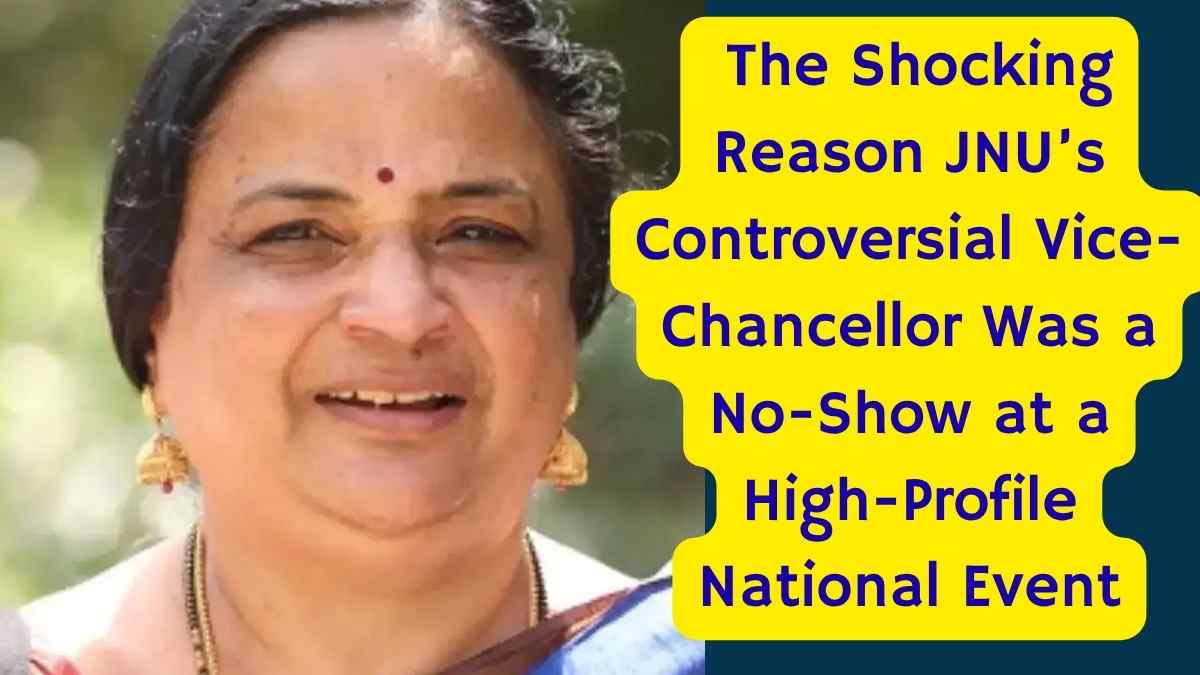JNU Vice-Chancellor Ignites Fresh Controversy by Skipping Crucial Central Universities Conference, Landing Her in Hot Water
In a move that has sent ripples of speculation and concern through India’s academic and political corridors, the Vice-Chancellor of Jawaharlal Nehru University (JNU), Santishree Dhulipudi Pandit, has landed herself in fresh trouble. The reason? Her conspicuous and unexplained absence from a high-profile, two-day Vice-Chancellors’ Conference of Central Universities, a pivotal event attended by the nation’s top academic leaders and chaired by senior officials from the Ministry of Education.
This is not just a case of a missed meeting. In the highly scrutinized world of Indian higher education, where JNU often finds itself at the epicenter of ideological debate, the VC’s decision to skip such a significant national conclave is being viewed as a serious matter, raising pointed questions about accountability, communication, and the already delicate relationship between the university and the central government.
The High-Stakes Conference: Why Her Absence Matters So Much
The Vice-Chancellors’ Conference is a critical annual event where the heads of all central universities convene to discuss and align on the future of higher education policy in India. The agenda is typically packed with discussions on crucial topics like the implementation of the National Education Policy (NEP) 2020, strategies for improving global university rankings, securing research funding, and addressing administrative challenges.
It’s a platform for direct dialogue between university leadership and policymakers at the Ministry of Education and the University Grants Commission (UGC). For a VC, especially from an institution as prominent and often contentious as JNU, attendance is not just expected; it’s seen as a vital part of their role in representing their university’s interests and staying aligned with the national academic roadmap.
Pandit’s absence, therefore, is being interpreted by many as a significant snub. It deprives JNU of a voice at a crucial table and risks creating an impression of non-cooperation or disinterest, which could have tangible consequences for the university in terms of funding and policy support.
“Unavoidable Reasons”: The Official Explanation Under Scrutiny
According to sources, the JNU administration has attributed the Vice-Chancellor’s absence to “unavoidable personal reasons.” While personal emergencies are a valid reason for missing any commitment, the vagueness of the explanation in the context of such a high-stakes event has failed to quell the controversy.
Critics and observers are now asking for greater transparency. Was the Ministry of Education informed well in advance? Were alternative arrangements made for JNU’s representation? The lack of clear communication has only fueled speculation, with some questioning whether the “personal reasons” mask a deeper issue or a deliberate act of defiance. This has placed the JNU VC controversy squarely in the national spotlight.
A History of Headlines: Santishree Dhulipudi Pandit’s Turbulent Tenure
Santishree Dhulipudi Pandit’s tenure as JNU’s first female Vice-Chancellor has been anything but quiet. Since her appointment, she has frequently been in the news for her outspoken statements, administrative decisions, and her efforts to navigate the complex and often polarized campus environment of JNU.
While some have praised her for her decisive leadership and attempts to bring a new perspective to the university, others have criticized her for her perceived alignment with the ruling political ideology, a charge that sits uneasily with JNU’s historical reputation as a bastion of left-leaning, independent thought. This latest incident is likely to be used by her detractors as further evidence of administrative friction and will undoubtedly become another contentious chapter in the ongoing narrative of the JNU administration’s relationship with its students, faculty, and the government.
Conclusion: More Than Just a Missed Meeting
This incident is a microcosm of the larger tensions in Indian higher education. It highlights the immense pressure on university leaders, the delicate balance they must strike between institutional autonomy and governmental directives, and the intense public and media scrutiny they face.
As the Ministry of Education reportedly takes a serious view of the matter, the coming days will be crucial. The focus will be on what, if any, official explanation is provided and how this affects the intricate power dynamics between one of India’s most iconic universities and the government. For now, the question lingers: was it a simple personal emergency, or a sign of a deeper fracture in a critical academic relationship?
Updated on August 13, 2025 with latest context.



